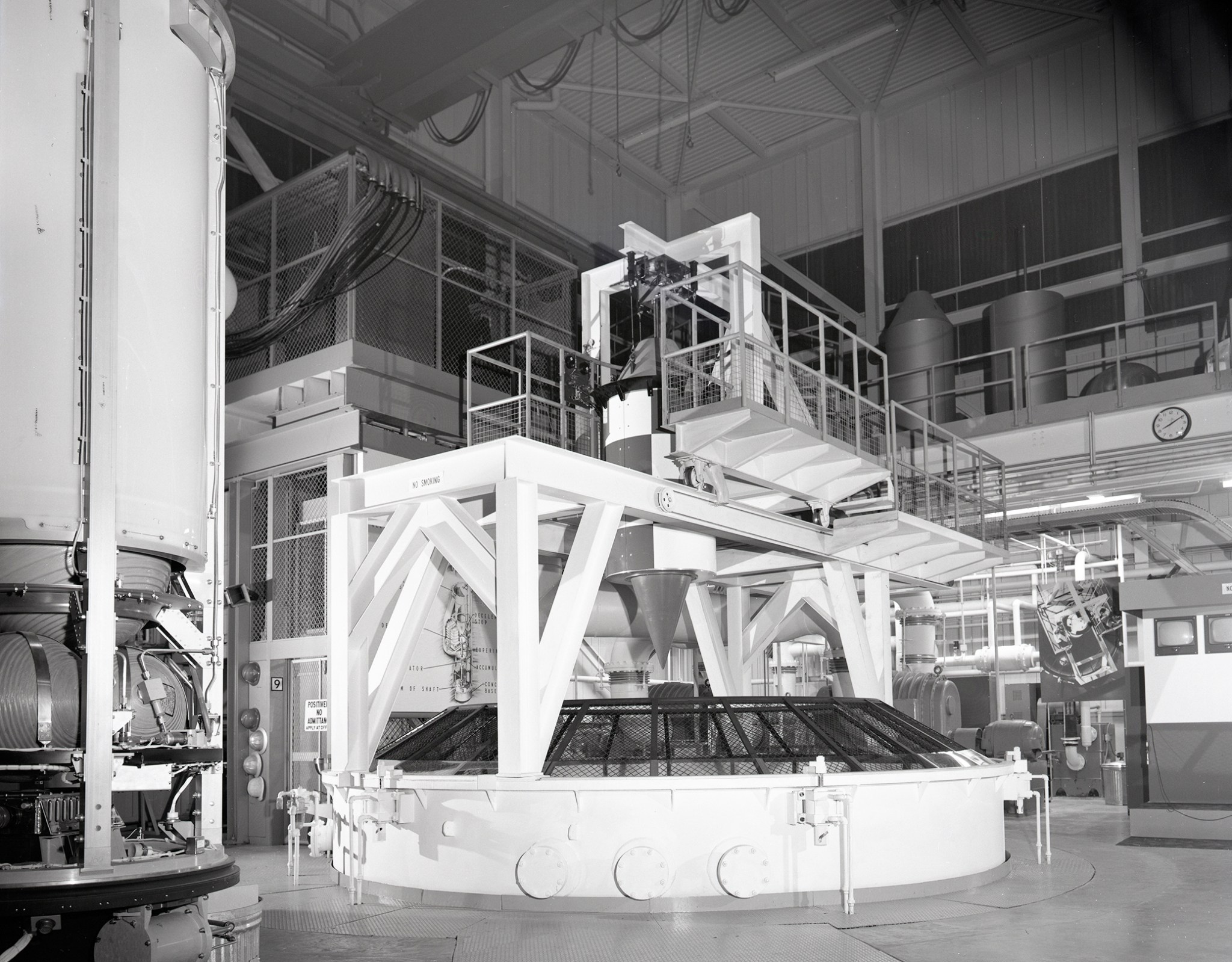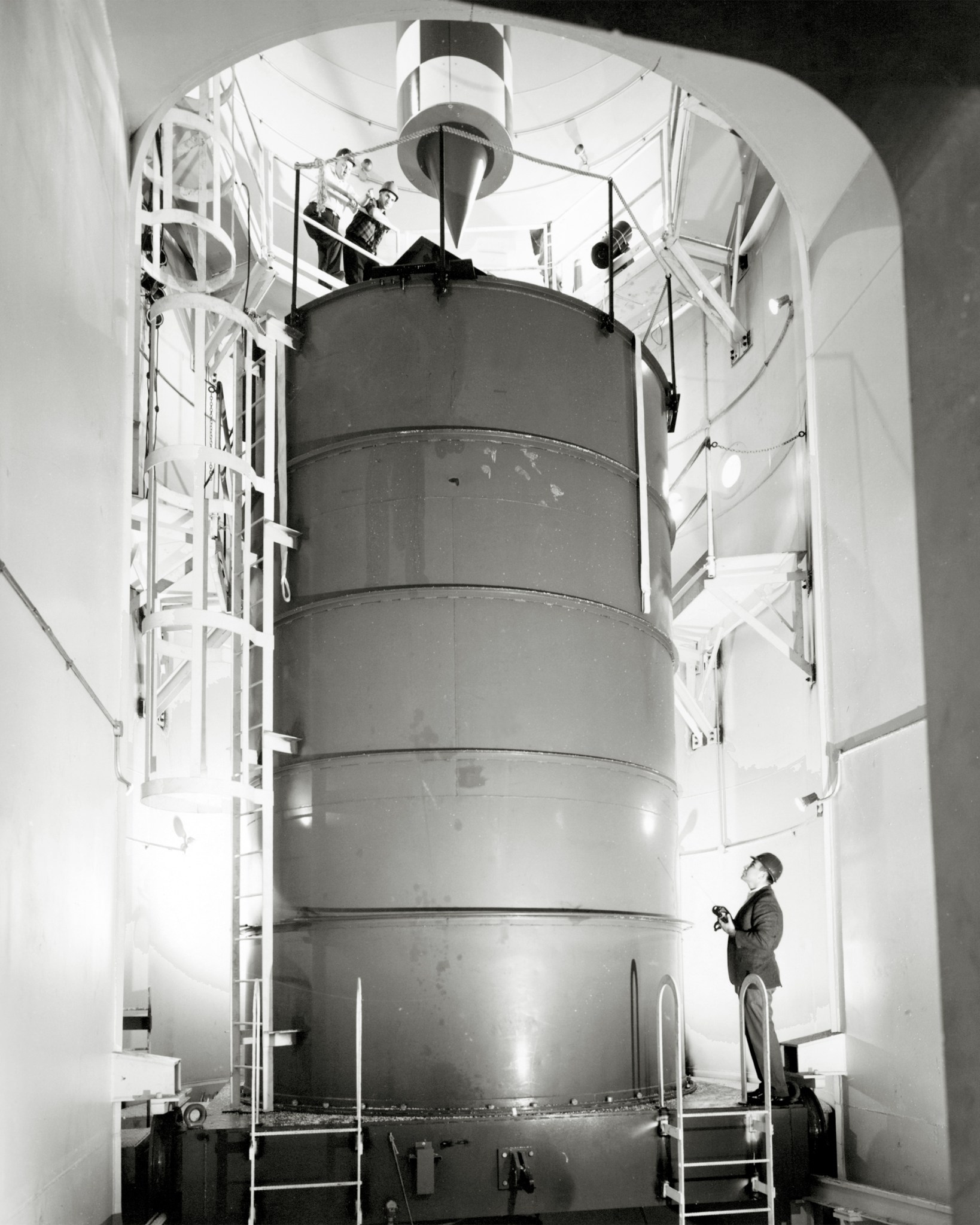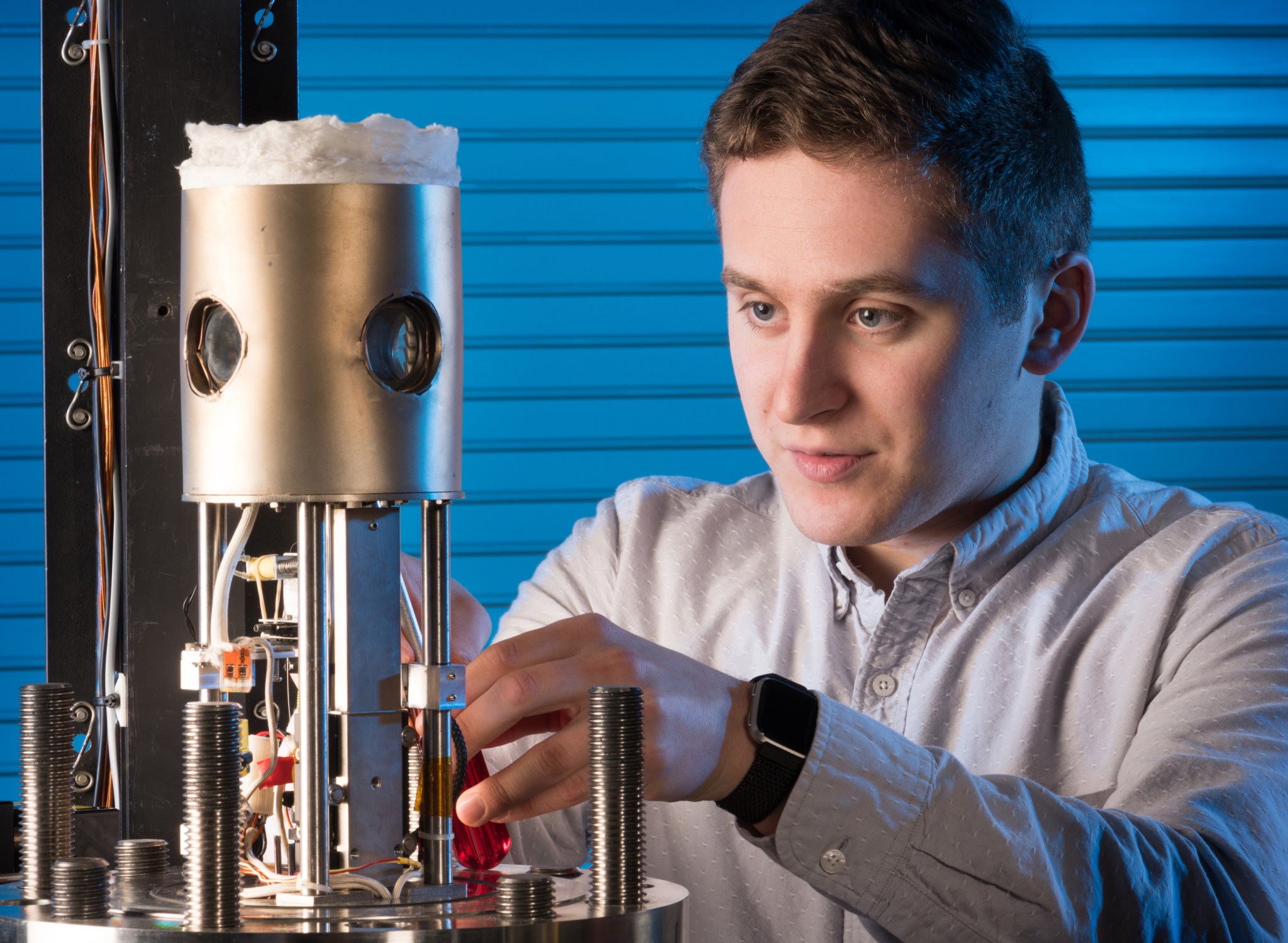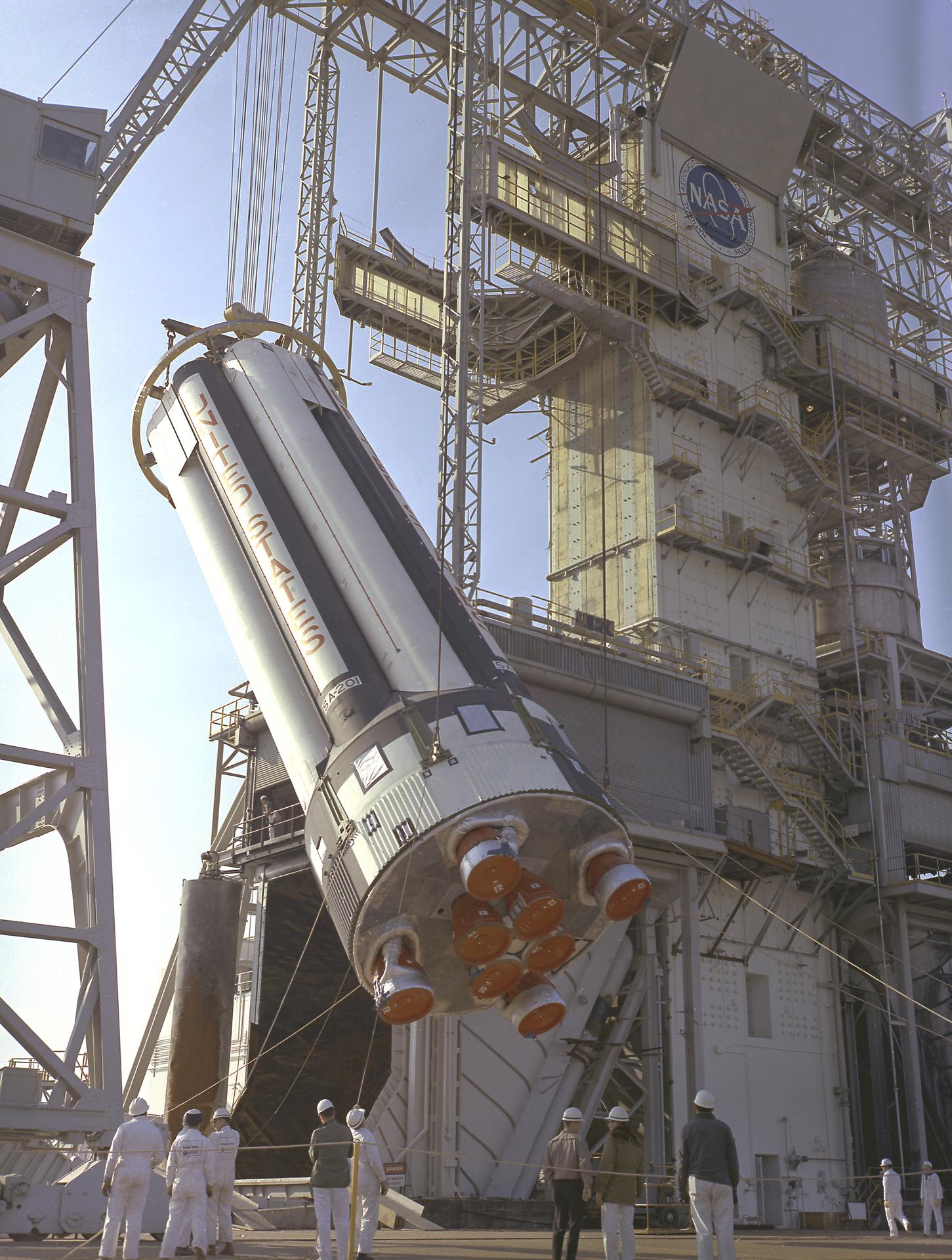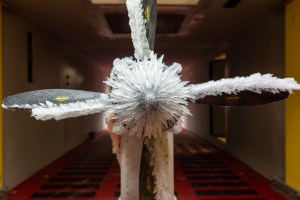As part of its 25th anniversary, NASA’s Lewis Research Center hosted an three-day Inspection for 2,000 invited guests October 4-7, 1966. One of the highlights was the brand new Zero Gravity Facility. The state-of-the-art facility significantly expanded the center’s tools to study the effect of microgravity on fluids for the space program.
Test packages dropped in its 500-foot deep vacuum chamber experience 5.2 seconds of microgravity during the fall. High-speed cameras and sensors recorded data during the descent, and a container filled with polystyrene pellets at the bottom of the pit brought the experiment package to a stop.
Lewis engineers soon began using the facility to study fluid behavior in microgravity. NASA researchers also introduced combustion into the Zero G’s repertoire, and the facility contributed to the Apollo 13 investigation.
Today, over 50 years later, NASA researchers continue to use the Zero Gravity Facility to investigate areas concerning cryogenic propellant management, fluid transfer, combustion, heat transfer, and materials science. It remains the largest facility of its kind in the world and is the only NASA facility capable of studying liquids in low gravity. The Zero Gravity Facility was named a National Historic Landmark in 1985.
Robert S. Arrighi
NASA’s Glenn Research Center































